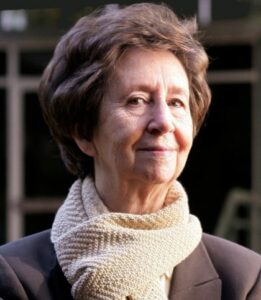11 Feb 2021
International Day of Women and Girls in Science: Role models who paved the way
Valuing the role of women in any area of knowledge, but especially in science, has become a priority task for governments and institutions around the world. The lack of role models in the sector greatly complicates the women scientists of tomorrow.
That is why, at the end of 2015, the United Nations General Assembly decided to designate February 11 as the International Day of Women and Girls in Science. The objective of this ephemeris is to recognize the trajectory of all those women who have contributed to the advancement of science and technology.
From here, in gratitude for paving the way for us in this sector, we list several of the most important women in the history of science.

It is impossible not to begin with Hypatia of Alexandria (370-416), killed by a Christian group who disagreed with her scientific ideas. This philosopher excelled in the fields ofmathematics and astronomy. It was she who mentioned for the first time the concept of heliocentrism, displacing the Earth from the center of the universe.
Marie Curie (1867-1934) is probably one of the most well-known scientists. Winner of two Nobel Prizes, her discoveries around radioactivity changed the history of physics and chemistry. Thanks to her investigations, two elements were discovered: polonium and radium.
Another woman who developed her career around radioactivity was Lise Meitner (1878-1968). In her case, she was part of a team that discovered nuclear fission, although the recognition was only taken by a colleague. However, a few years later, in recognition of her achievements, the experts named a chemical element ‘meitnerium’.
On the other hand, in the field of biology, we have Barbara McClintock (1902-1992). She was the one who discovered what are known in genetics as “jumping genes”, a phenomenon totally unexpected for experts because it revealed that genes do not always occupy the same place on chromosomes. However, the credit, nothing less than a Nobel Prize in Medicine, went to his colleagues of the opposite sex, who at the time did not accept his finding.
Another scientist who was not recognized with the Nobel Prize in Medicine for her work, but two scientists who used her research, was Rosalind Franklin (1920-1958). Her work was crucial to understand the structure of DNA as she was the first person to get X-ray images of this double helix structure.

In the field of geology we have Inge Lehmann (1888-1993). This Danish geologist and seismologist discovered in 1936 the discontinuity that separates the outer core from the inner core of the Earth, something fundamental because, until then, it was believed that our planet was hollow. To prove her theory, Lehmann used earthquakes.
In Spain we also have great scientists. One of the most outstanding is Margarita Salas (1938-2019). This biochemist discovered DNA polymerase, which is responsible for DNA replication, and during almost her entire career she investigated a virus of great use in the fields of medicine, biotechnology and even criminology. Her findings apply, among other things, to PCRs that allow us to know if someone is infected with coronavirus.
Apart from these incredible women, there are many more like Emmy Noether, Joselyn Bell, Jane Goodall, Sophie Germain, Mary Leakey, Marie Tharp, Angela Ruiz Robles, Ada Lovelace, Grace Murray Hopper or Katherine Johnson.
